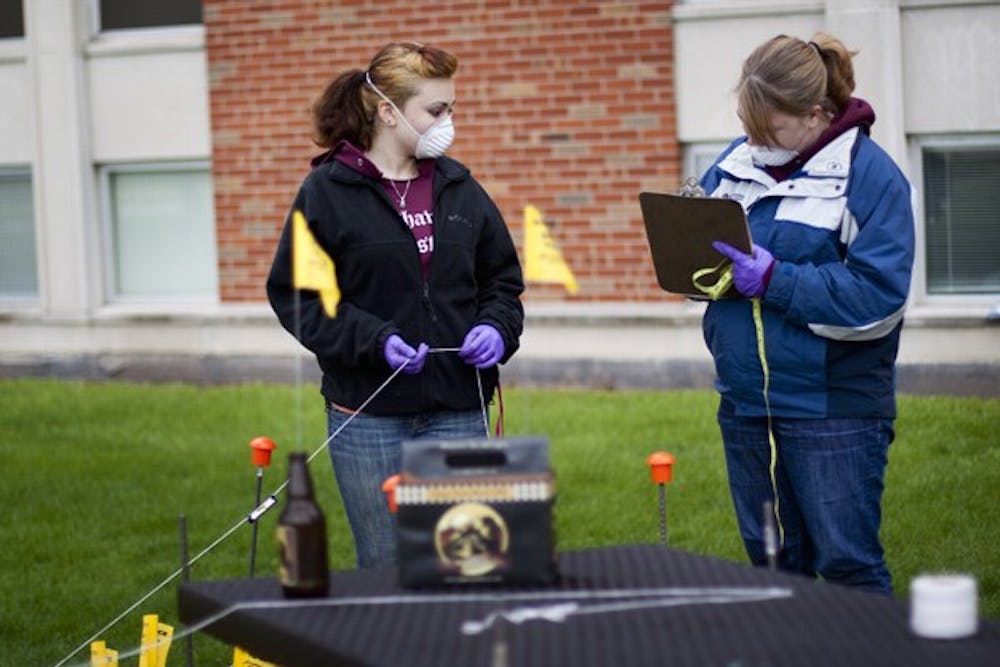Forensic anthropology class spends final exam time learning from a crime scene
Students from ANT 342: Forensic Anthropology gathered together on a cold Friday afternoon to take part in a mock crime scene for their final exam.
Catherine Willermet, assistant professor of anthropology, did this before when she taught at the University of Louisiana for two years but has never implemented the project as a final exam until now.
“All semester long they’ve been learning different aspects of forensic anthropology,” Willermet said. “This is the largest student lab I’ve done.”
The whole point of forensic anthropology is when the police have to call in an expert when they find bodies outside that have decayed and are unidentifiable, Willermet said.
“You can’t prosecute anyone if you can’t identify the body,” she said.
Newaygo sophomore Kelsey Vandenbosch was in one of nine groups of five students given a specific job. The lab involved finding the bones, mapping them out and analyzing the evidence.
While learning about decomposition rates and trauma wounds, Vandenbosch said she was exited to learn about the hands-on final exam.
“I think it’s a lot better than a written exam,” Vandenbosch said. “It gives us a hands-on experience instead of learning it in a classroom. It makes you realize how much work goes into it.”
Laura Kettle, a Bridgman senior, said she looks to use the experience in becoming a real forensic anthropologist.
“I took a class on it when I was a sophomore,” Kettle said. “I was pretty good at skull reconstruction.”
Each group has two mappers, a photographer, a recorder and one excavator, Kettle said. Each group would flag everything and anything that looked like evidence. This included cigarette butts, pencils, candy wrappers and any trash that was around.
“I know it’s going to be difficult,” Kettle said. “But Professor Willermet is a great teacher.”
Livonia junior Heather Marshall was in a group with a skeleton that was missing its upper half.
“We are assuming it's male, because of the narrower sub pubic angle on the pelvic bone,” she said.
After all the students finished their work outside, they were then instructed to do a write-up about the results. There is specific paperwork for each job, Willermet said.
Each group was also required to map out a one-by-one meter grid across the portion of the crime scene they staked out, Willermet said. Whenever there were visitors at each crime scene, whether it was a reporter or another anthropologist, they had to sign in and write down the time.
“They’re doing really well so far,” Willermet said. “They are asking very few questions.”




